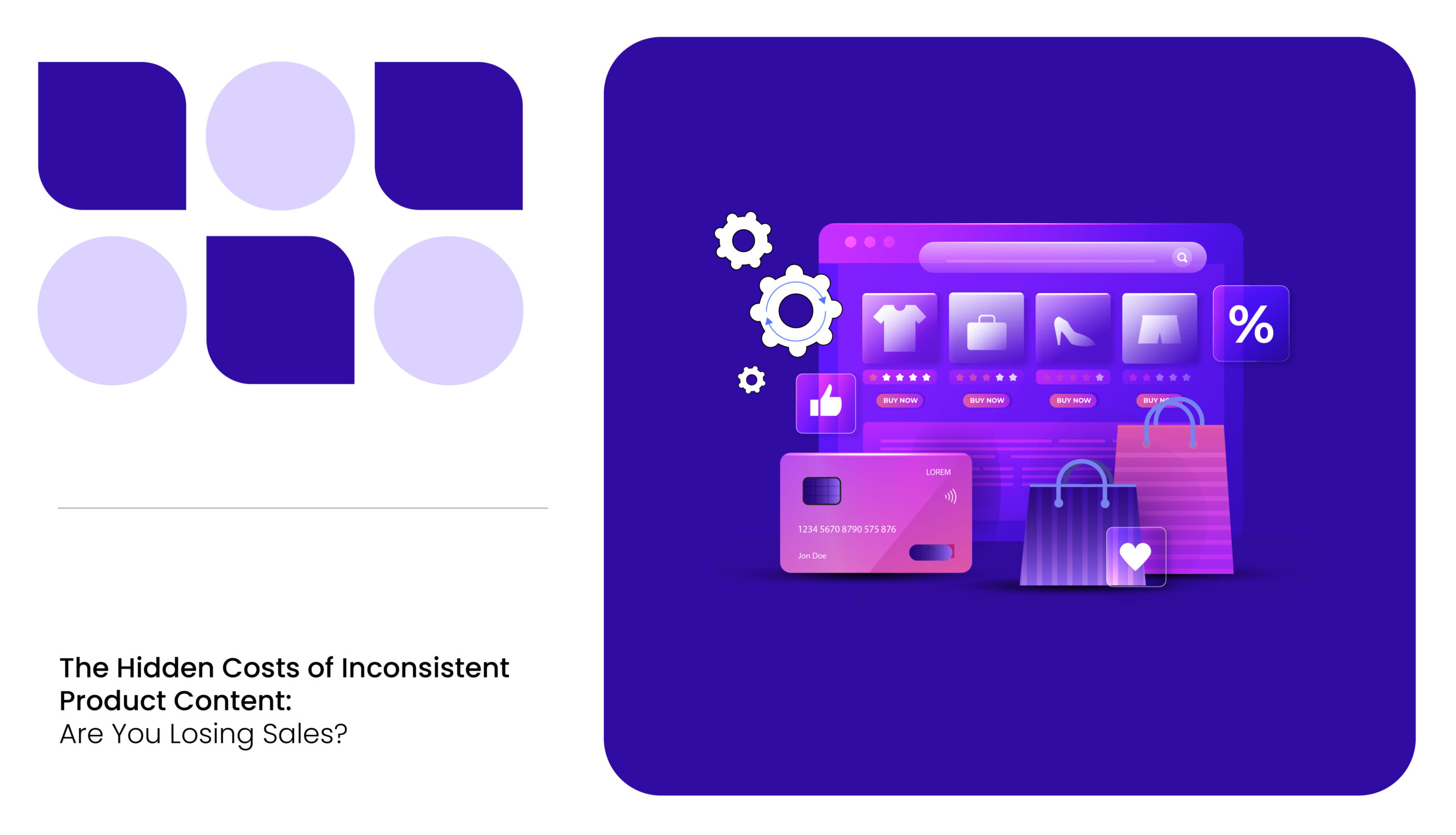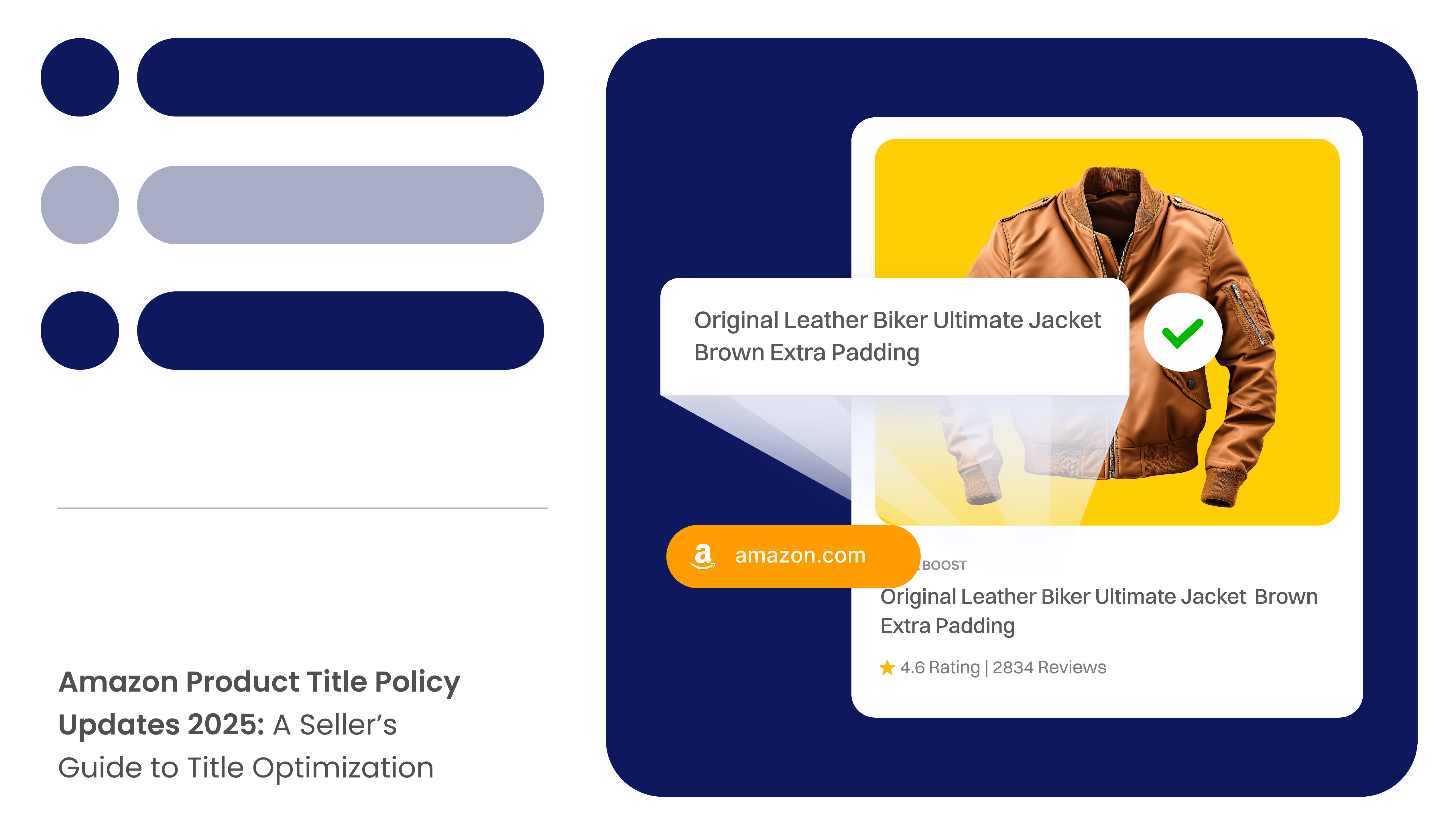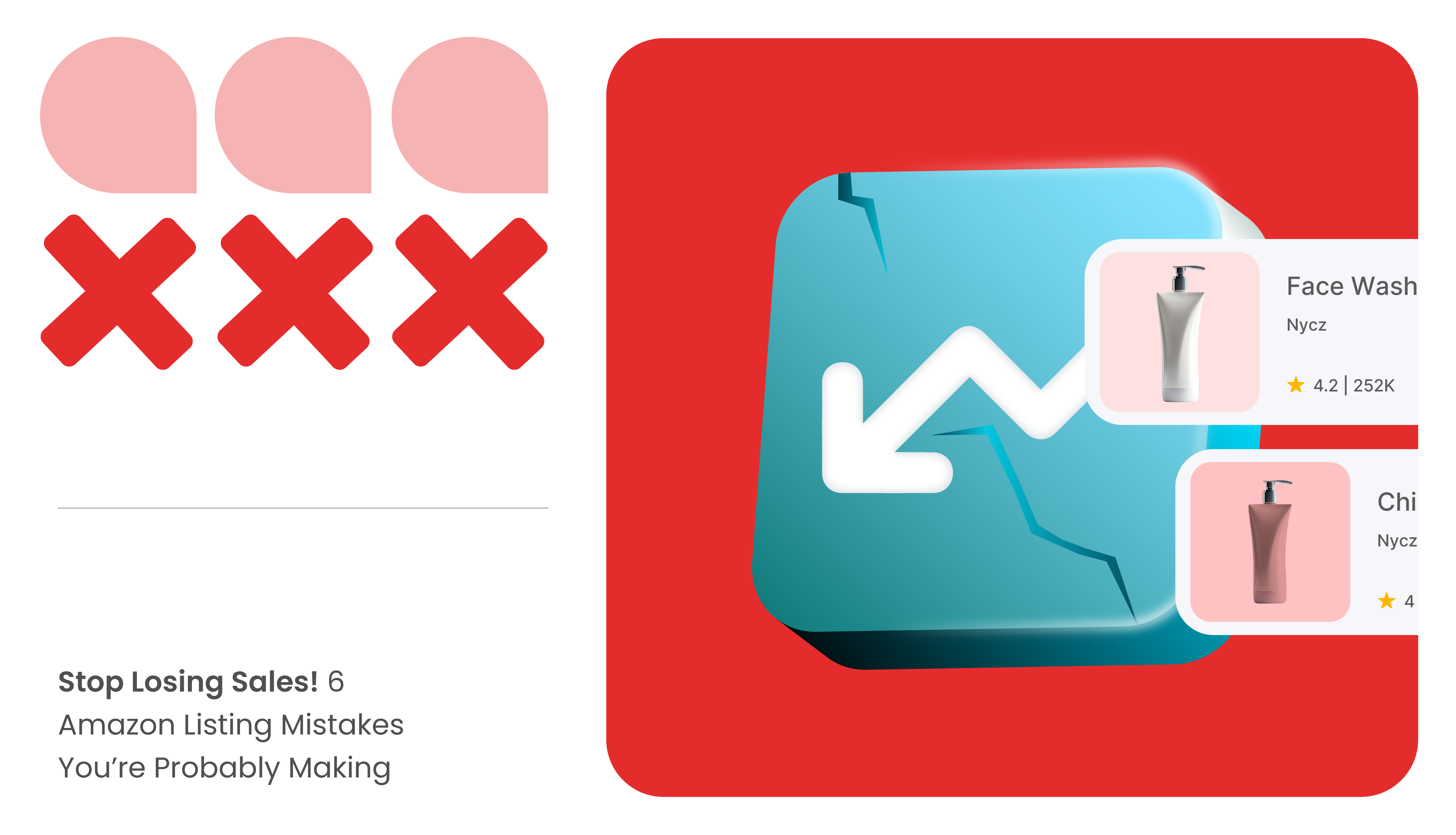According to the latest research, the average attention span of a person is around 8.25 seconds. That’s right, you have 8 seconds to grab their interest, communicate your product’s value, and convince them to stay on your page.
Combine that with the fact that US e-commerce sales are projected to hit a staggering $1.39 trillion by 2025, and it becomes clear: optimizing your product description writing is a vitally important skill for online businesses.
For brand managers and e-commerce sellers, these statistics highlight a simple truth: if your product descriptions aren’t hitting the mark, you’re losing customers.
Shoppers are bombarded with numerous choices online, and it’s your job to make sure they understand why your product stands apart among similar offerings.
An advanced content compliance software would be the perfect addition to your business. It would allow you to maintain your brand narrative consistently through product description pages.
Why Do Product Descriptions Matter?
When a potential customer visits your product page, they can’t touch, feel, or try your product like they would in a physical store.
Product descriptions, images, and a few reviews are the only anchors they have for making a decision.
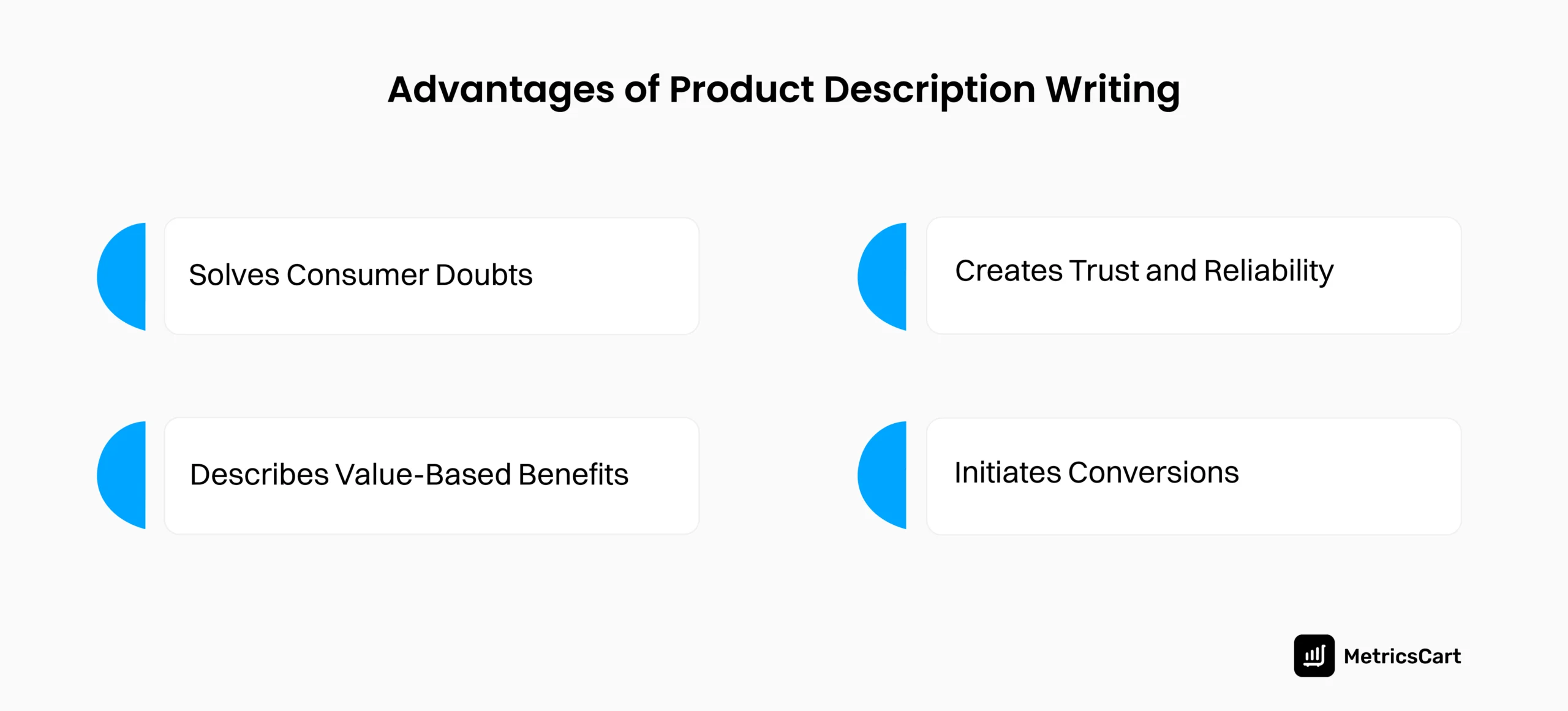
You need to know that the best product descriptions are the ones that:
- Solve a problem
- Offer value-based benefits
- Create trust and reliability
- Initiate action
If your description does not answer their questions or concerns, they will quickly move on to the next seller who does.
READ MORE | Interested in knowing more about how consumers shop online? Check out our blog on Optimizing Consumer Buying Process: What Every E-Commerce Brand Needs to Know
How To Write Product Descriptions That Sell
Now that we understand the importance of content compliance, let’s focus on how to write them to boost sales.
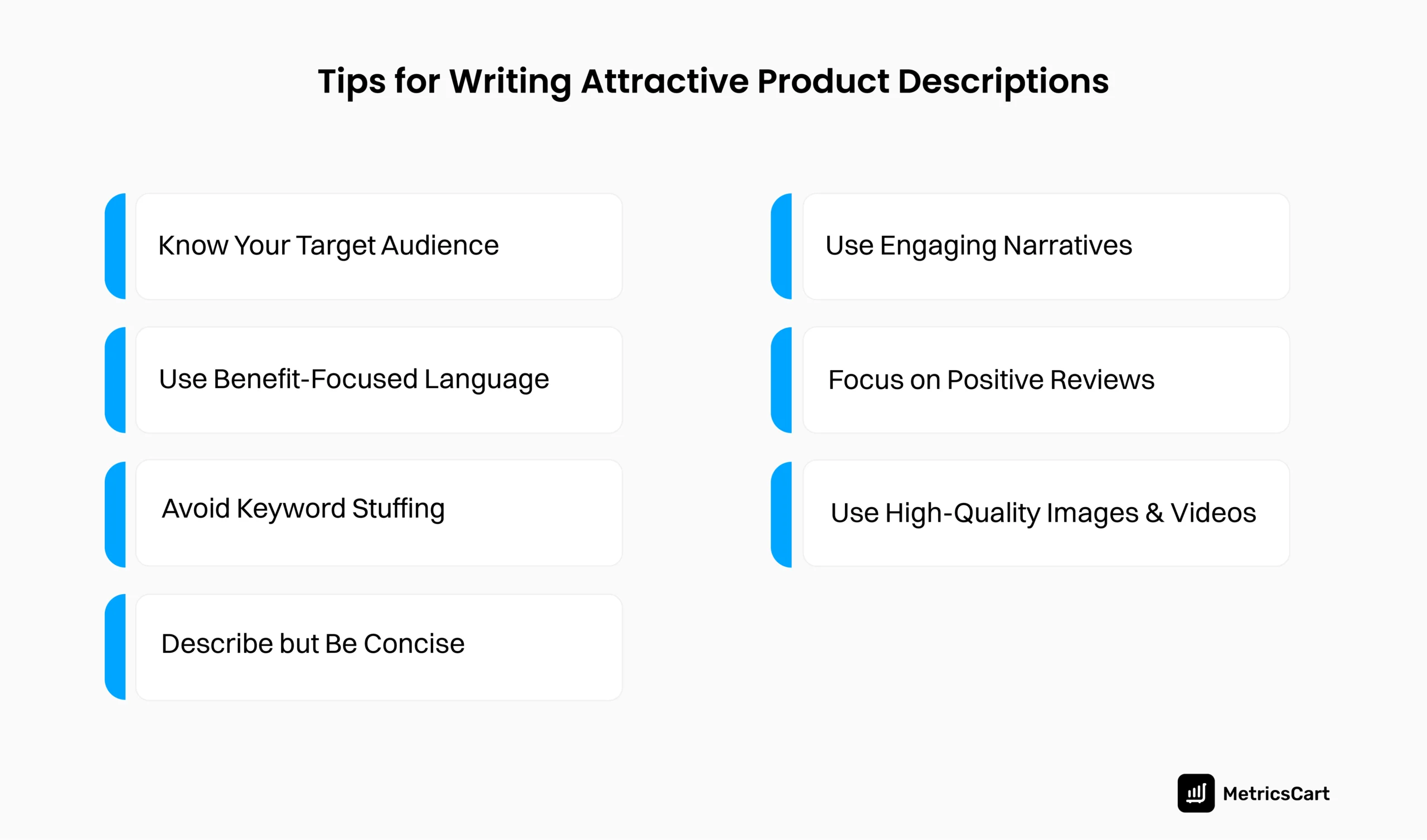
Know Your Target Audience
To write a product description that sells, you first need to know your target audience. Each consumer category can have specific pain points, and your product description should clearly identify who you are writing for.
Customers are often unsure about a product’s quality and whether its price offers the best value for them.
So brands should make sure that the product description writing isn’t ambiguous or missing essential details that can leave customers confused or hesitant.
Write informative and reassuring descriptions. If your product is known for durability, highlight that feature in your description.
If you’re selling a premium product, justify the higher price by focusing on its unique features or superior quality.
Analyze your reviews to identify repeating questions about your product and ensure that those questions are answered upfront.
Use Benefit-Focused Language
Features are facts, but benefits are what sells the product for a brand. Focus on what your product does for the customer and how it improves their quality of life.
Customers don’t like to read a product’s same old boring feature list. While we agree that it is an important aspect of product page optimization, we should carefully integrate it into the overall benefit-oriented language.
For example, if you’re selling a high-capacity power bank. A weak product description might say:
“This power bank has a 20000mah battery capacity and offers fast charging.”
This is a basic description of the product that lacks engagement and overall relatability. So, a better way to describe it would be:
“Enjoy uninterrupted power supply for your devices with a monstrous 20000mah battery capacity that is perfect for your long commutes or extended play times. The fast-charging technology fills up the charge in minutes, allowing you to focus on what matters.”
Can you see the difference? The first example lists features, while the second one shows how those features can improve the customer’s overall quality of life.
Avoid Keyword Stuffing
Product descriptions also play a crucial role in SEO (Search Engine Optimization), helping your product show up in search results on major e-commerce platforms like Amazon, Walmart, etc.
So, it is essential to use relevant keywords to help customers find your product.
However, avoid keyword stuffing, which is when you overload your description with keywords to the point where it sounds unnatural or made up.
For example, if you’re selling an air fryer, relevant keywords might be “air fryer,” “healthy cooking,” “auto cooking programs,” etc.
Use these keywords organically in the product title and description so that you don’t sacrifice readability for the sake of SEO optimization.
Explain, Yet Be Concise
There’s a fine line between being descriptive about your product and maintaining contextual conciseness.
As brands that sell products with high competition, you should be careful enough to provide necessary details that can reassure customers but not so much that they get bored or overwhelmed.
According to a standard description style, we can include the following:
- Product specifications like size, dimensions, materials, and colors
- Use cases on how the product is used and its essential features
- Unique selling points of your product that stand out from competitors
At the same time, avoid using long-winded paragraphs. Use bullet points to break up the primary information and make the description easy to read.
Use Narrative Techniques
92% of consumers would like to read ads that are designed like stories rather than boring lists of facts.
If you can weave a story into your product description, you’ll capture attention and create an emotional connection with your customer.
For example, when you’re selling a handmade leather wallet. Rather than just stating the materials and features, tell a brief story about the craftsmanship, which can go like this:
“Our leather wallets are handcrafted by artisans using centuries-old techniques, ensuring each piece is not only stylish but durable enough to last a lifetime. Each wallet is a unique piece crafted with utmost care and ingenuity that guarantees you own the best of the best.”
The story adds personality to the brand and helps the customer visualize its value beyond just the specifications. They will feel a sense of personal attachment and value at the thought of owning the product.
Focus on Positive Social Proofs
One of the biggest pain points for a customer is the fear of making the wrong purchase. Nobody wants to waste money or time on something that won’t meet their needs.
This is where social proof, such as customer reviews, testimonials, or even case studies, becomes a deal breaker for brands and customers alike.
Reviews influence buying decisions, and mentioning a product’s popularity in your product description can reassure potential buyers that they’re making an intelligent decision.
A complete, lengthy product description explaining product specifications, benefits, etc., can fall short of a small line of review posted by a fellow customer, which can be like:
“Join over 5,000 happy customers who have transformed their morning routine and switched to a healthy lifestyle with our top-rated breakfast cereal.”
This simple step can create a sense of credibility around the brand and how other customers prefer it.

Use High-Quality Images & Videos
By keeping all the above strategies in mind, your product sales can still fall short if high-quality visuals do not support them.
Shoppers rely on images and videos to understand what the product looks like and how it works. Descriptions are powerful, but showing is just as important as telling.
It instills confidence in consumers about the look and feel of the product they are going to buy and how it can complement their lifestyle.
Use clear, detailed images that highlight the product from different angles. Add videos demonstrating how the product is used in real life.
Visuals help reduce doubt and make the product more tangible in the customer’s mind.
READ MORE | Do you want to increase your product rankings on Amazon? Check out our blog on How to Rank on Amazon: 7 Essential Tips for Organic Success
Conclusion
Effective product descriptions that sell is about understanding your customers’ needs and addressing their pain points. You should clearly and compellingly communicate your product’s value.
By focusing on benefits, using keywords strategically, and telling a story that resonates, you can turn your product descriptions into powerful selling tools.
Remember, your description is more than mere words; it’s your opportunity to speak directly to your customers, answer their questions, and show them why your product is the perfect solution for their needs.
So, next time you sit down for a product description writing, ask yourself:
How can I make this product irresistible? Write with purpose, and watch your sales soar.
Ready to Supercharge Your Brand’s Growth?
FAQ
Focus on benefits, use clear and concise language, and include relevant keywords for SEO. Highlight what makes your product unique and address common customer concerns.
A product description should be long enough to provide all the necessary information but short enough to hold the reader’s attention. Typically, aim for around 300-500 words, with bullet points for key features.
By addressing customer pain points, showcasing product benefits, and creating an emotional connection, you can build trust and encourage purchases.





